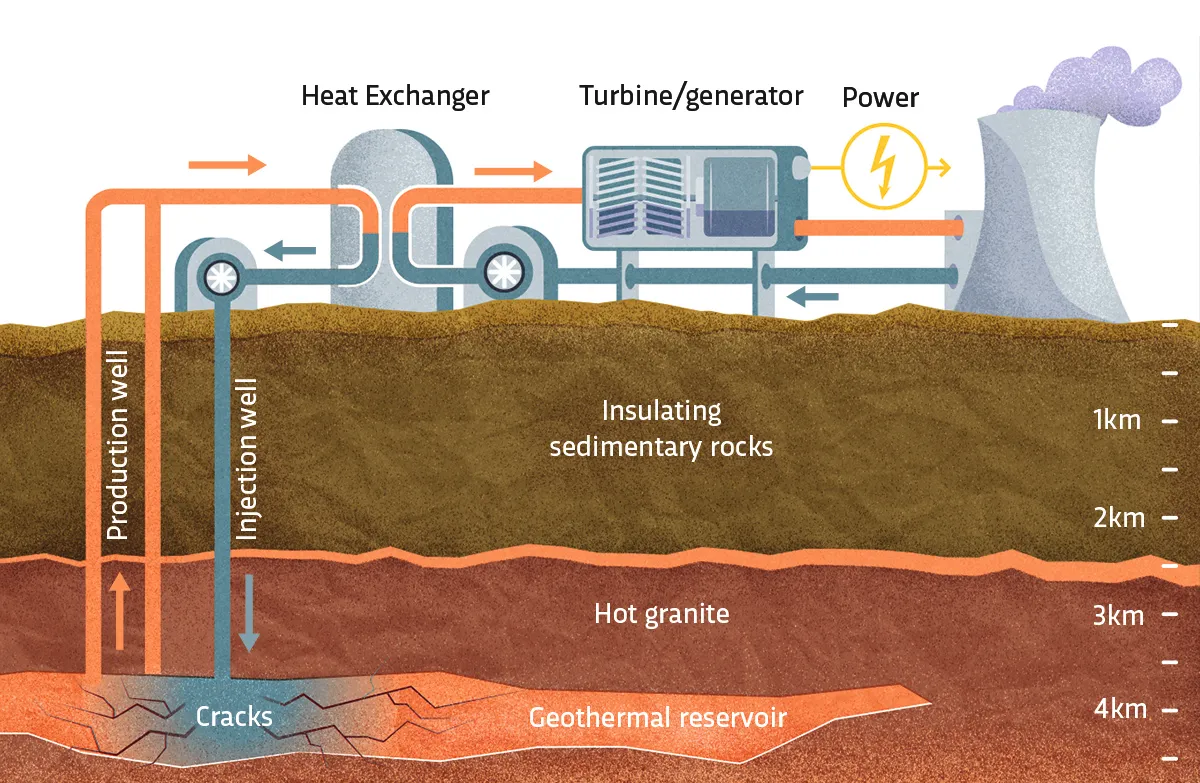In volcanic regions, reservoirs of hot underground water will rise up a borehole under their own pressure and turn into steam to drive a turbine at the surface. But in most of the world, the rocks within reach of drilling equipment are dry, impermeable rocks such as granite, so an engineered geothermal system has to be created.

1. Cold water pumped in
Cold water is pumped at high pressure into an injection well. The water forces natural cracks in the strata to expand, allowing the water to seep sideways through the hot rock. This is similar to the fracking process used for oil and gas extraction, but doesn’t require harmful solvents.
2. Hot water extracted
Several ‘production wells’ are also drilled nearby to allow the heated water to flow back out of the rock. Drilling these wells involves a certain amount of luck because they must hit one of the fissures – typically less than 5cm wide – in order to extract the water. Modern geo-imaging technology has improved the hit rate to as high as 80 per cent, compared with only 25 per cent a few years ago.
3. Electricity generated
At the surface, the hot water is passed through a heat exchanger to boil a secondary fluid, such as butane, which creates high pressure gas to drive a turbine, generating electricity. The cooled water is pumped back into the rock strata in a closed loop.
Read more:
- Why hasn’t tidal power taken off yet?
- The thought experiment: Which generates more electricity, running on a treadmill or wearing solar panels?
- How does solar energy actually work?
- Are floating solar farms better than land-based ones?
To submit your questions email us at questions@sciencefocus.com (don't forget to include your name and location)